Back then, I didn’t know much about axle setups. I thought the bigger the truck, the better the job would go.
So I rented the largest trailer I could find. Problem? I didn’t check weight limits. Got stuck. Got fined. Delivery got delayed.
After that mess, I started learning more. Over time, I worked with different trucks, asked the right questions, and got real-world experience. That’s how I found out what tri axle trucks can actually do.
This article will walk you through what a tri axle truck is, how it’s different, and whether it’s right for your work.
By the end, you’ll know if it’s the right choice—or if you should go with something else.
So let’s get down to it!
1. What Is a Tri Axle Truck?
A tri axle truck is a vehicle with three axles grouped near the rear.
The word “tri” means three. And in this case, it refers to the number of axles that support the load. Most often, you’ll see two drive axles plus one additional axle called a lift or tag axle.
Here’s how it usually works:
- Two axles power the truck and carry most of the weight.
- The third axle helps spread the load.
- If it’s a lift axle, it can be raised when not needed.
- If it’s a tag axle, it stays down but doesn’t drive the truck.
Why does this matter?
Because weight matters—especially in heavy transport. The more axles you have, the more evenly the weight is shared. That reduces wear on tires, improves balance, and helps the truck meet legal weight limits.
I still remember the first time I used a tri axle dump truck. It handled a full load of gravel better than any tandem I’d used before. The ride was smoother, and I didn’t feel like I was pushing the truck to its limit.
You’ll often find tri axle setups in:
- Dump trucks
- Tanker trucks
- Flatbed trailers
These trucks are common in construction, mining, and bulk transport.
If you’re moving heavy loads and want to stay legal, reduce wear, or make fewer trips, a tri axle might be what you need.
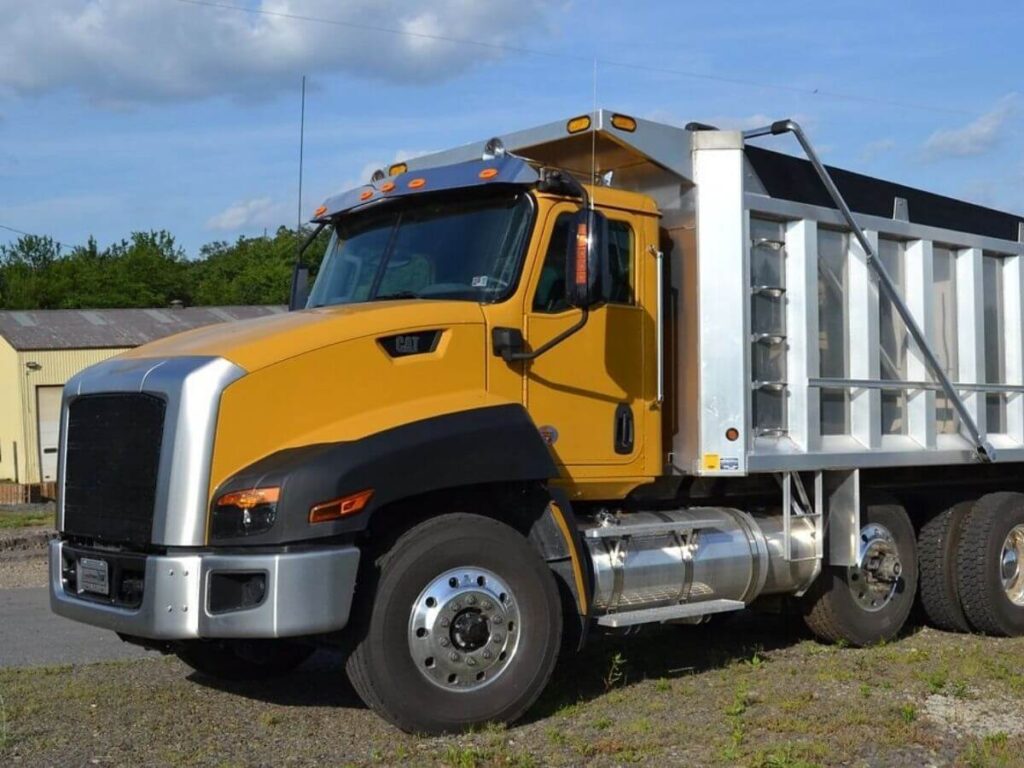
2. Key Advantages of Tri Axle Trucks
When I started using a tri axle truck, I didn’t expect it to change how I worked. But after a few hauls, I realized it wasn’t just about carrying more weight. It was about working smarter, not harder.
Higher Legal Payload
One of the biggest advantages of a tri axle truck is that it can legally carry more weight. The third axle helps spread the load more evenly, which makes it easier to meet road weight limits without needing special permits. At rhinotrail, we’ve customized tri axle trucks for customers who need to move heavy loads daily but want to avoid permit delays. That extra capacity doesn’t just save money—it keeps jobs moving without interruptions.
Better Weight Distribution
The way the weight is spread out also puts less strain on the road and the truck itself. I’ve seen how tandem axle trucks wear through tires and suspension faster when overloaded. But with a tri axle, the load is shared more evenly. That helps the truck stay in better shape and keeps you clear of fines in areas with strict axle weight rules.
More Stability Under Load
Another thing I noticed right away was how much more stable the truck felt under a full load. With a tandem setup, the back end can feel a little light when you’re carrying something uneven, like gravel or scrap. But with a tri axle, the ride is smoother and more balanced. It handles turns better, and braking feels more controlled, especially when the bed is full.
Easier to Handle Than You’d Expect
What surprised me most was how well the truck handled in tighter spaces. I thought more axles would mean a harder time turning or backing up, but that wasn’t the case. It’s still easier to maneuver than a quad axle or full-size trailer, and that makes it useful for both city routes and job sites.
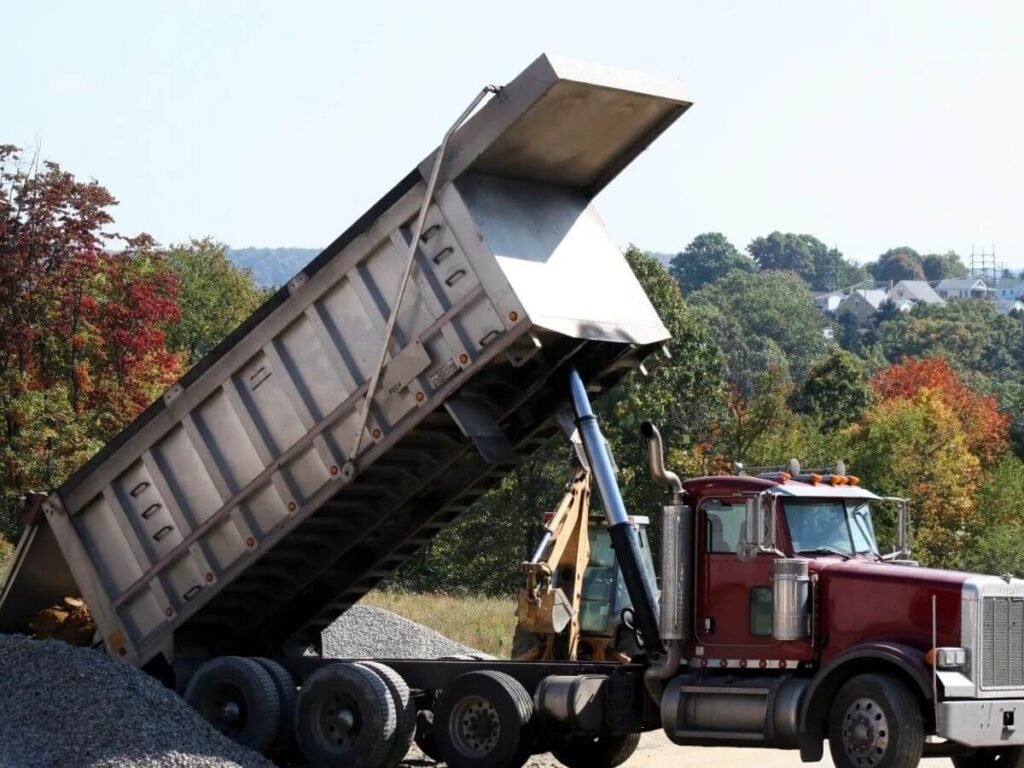
3. Key Components and Axle Structure
The setup on a tri axle truck does more than just add extra wheels. Each part works together to support heavy loads, stay stable on the road, and reduce wear over time.
- Rear axle group: Most tri axle trucks have 2 drive axles at the back. These axles carry the main weight and provide power to move the truck. The third axle is usually a lift axle, placed either in front of or behind the drive axles.
- Lift axle: This axle doesn’t drive the truck. Its job is to help carry weight when needed. You can lower it when the load is heavy and raise it when the truck is empty. That helps reduce tire wear and save fuel.
- Suspension system: You’ll typically find either spring or air suspension.
- Spring suspension is strong and simple. It’s great for rough roads and heavy materials.
- Air suspension gives a smoother ride. It adjusts better to uneven surfaces and protects fragile cargo.
- Brake system: Most tri axle trucks use air brakes. These give better stopping power, especially under heavy loads.
- Frame strength: The frame is built tougher than a standard truck. It needs to handle the added weight from that third axle.
- Tire configuration: Many tri axle setups use dual tires on the rear axles. This helps spread the load and gives better traction on rough ground.
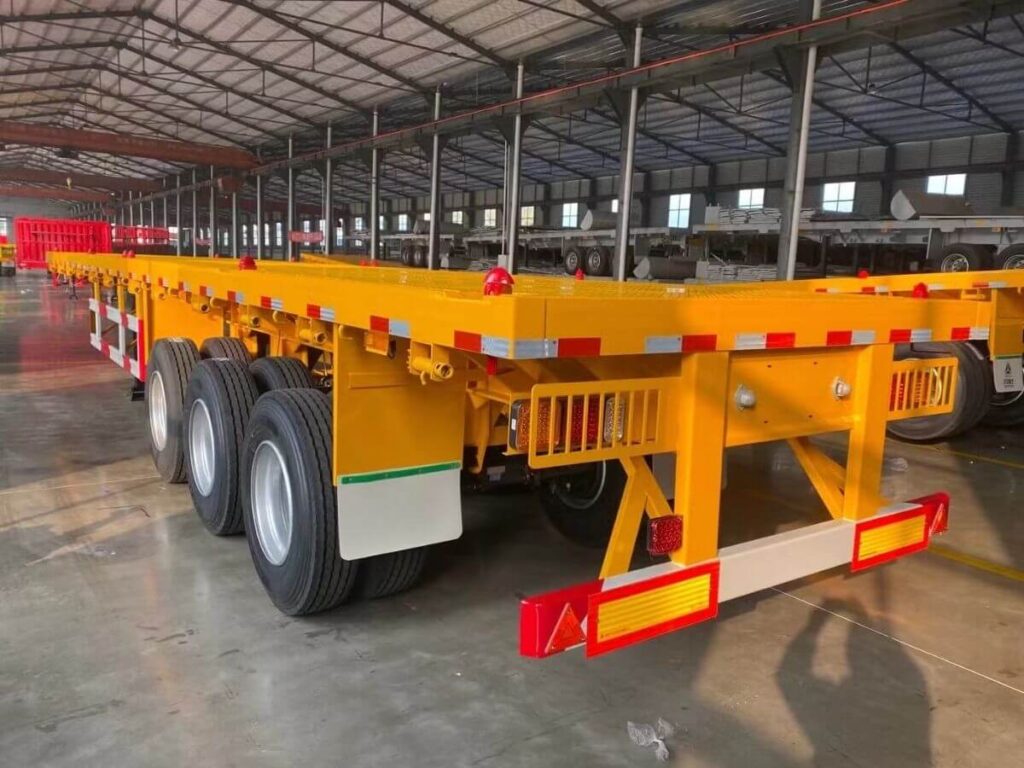
4. Common Types of Tri Axle Trucks
Tri axle trucks come in different types, and each one is built for a specific kind of job. Choosing the right one depends on what you haul, how heavy it is, and the type of roads you drive on. Over the years, I’ve seen how much smoother the work gets when you match the truck to the task.
Tri Axle Dump Trucks
Tri axle dump trucks are built to carry loose bulk materials like gravel, dirt, or sand. They’re common on construction sites, road projects, and anywhere that needs high-volume material hauling. The extra axle helps support the added weight without needing permits and gives the truck better balance on uneven ground. I’ve used these on heavy loads where a tandem just couldn’t keep up, and the ride felt more stable all around.
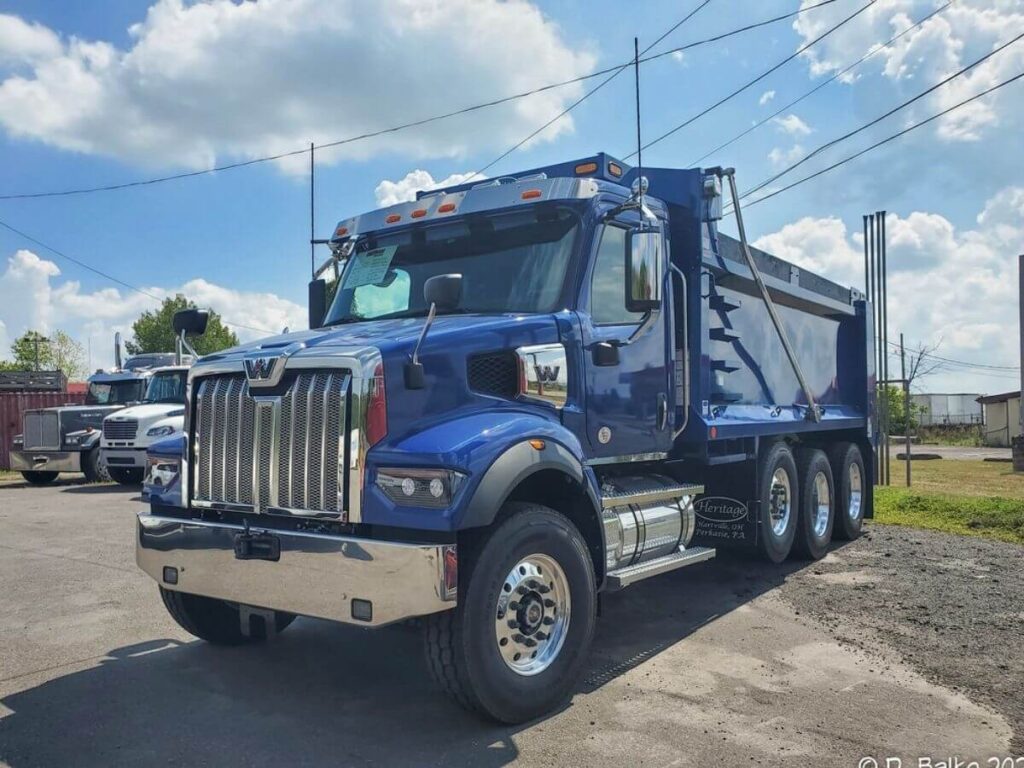
Tri Axle Flatbeds
Flatbeds are used to haul large, solid items like steel beams, lumber, or machinery. The third axle helps spread the weight and keeps the truck steady, even when the load isn’t evenly placed. I’ve seen flatbeds used for long-distance hauls, especially when the cargo is heavy and wide. At rhinotrail, tri axle flatbed trailers are offered in multiple sizes—like 40 ft, 45 ft, and even 53 ft—so you can match the trailer to the load without overbuilding. They offer more flexibility without losing control or overloading the frame.
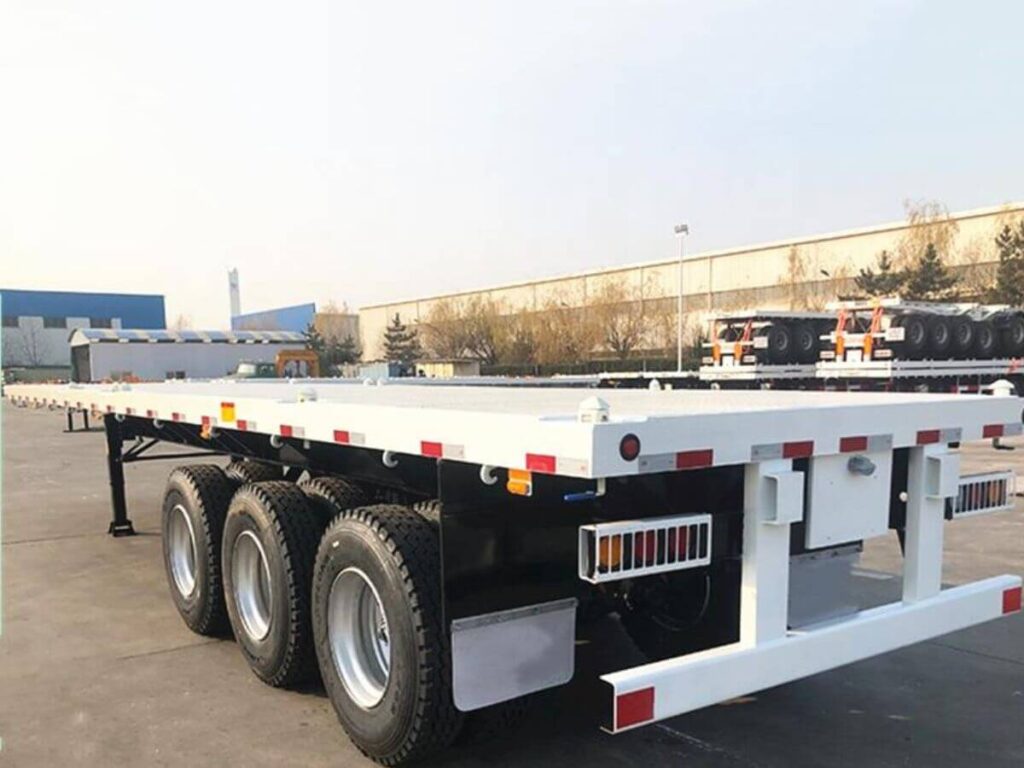
Tri Axle Tankers
Tankers move liquid cargo such as fuel, chemicals, or milk. Because liquids shift while in motion, keeping the truck balanced is critical. The tri axle layout helps control that movement, making the drive safer and smoother. If you’re working with liquid loads, that third axle isn’t just helpful—it’s almost necessary, especially on sharp turns or sudden stops.
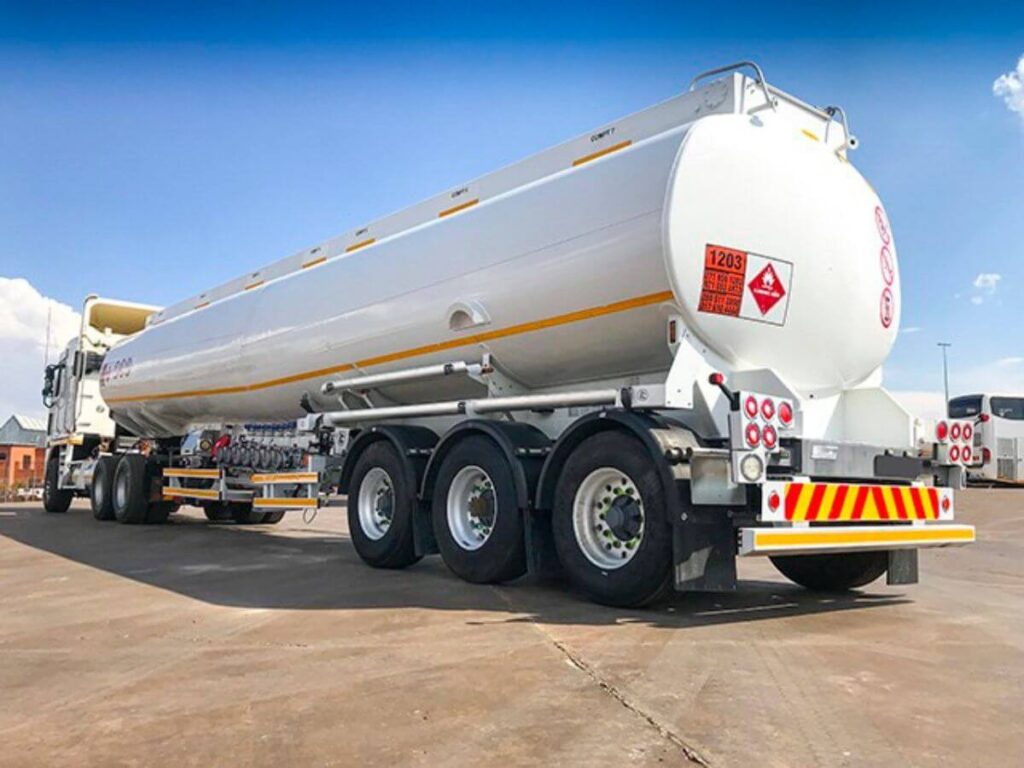
Tri Axle Lowboys
Lowboys are used for hauling oversized equipment like excavators, generators, or turbines. They sit closer to the ground, which makes loading heavy machines easier and more secure. The tri axle setup adds strength and keeps the trailer from flexing or sagging under extreme weight. I’ve seen them used on heavy-duty sites where nothing else would get the job done safely in one trip.
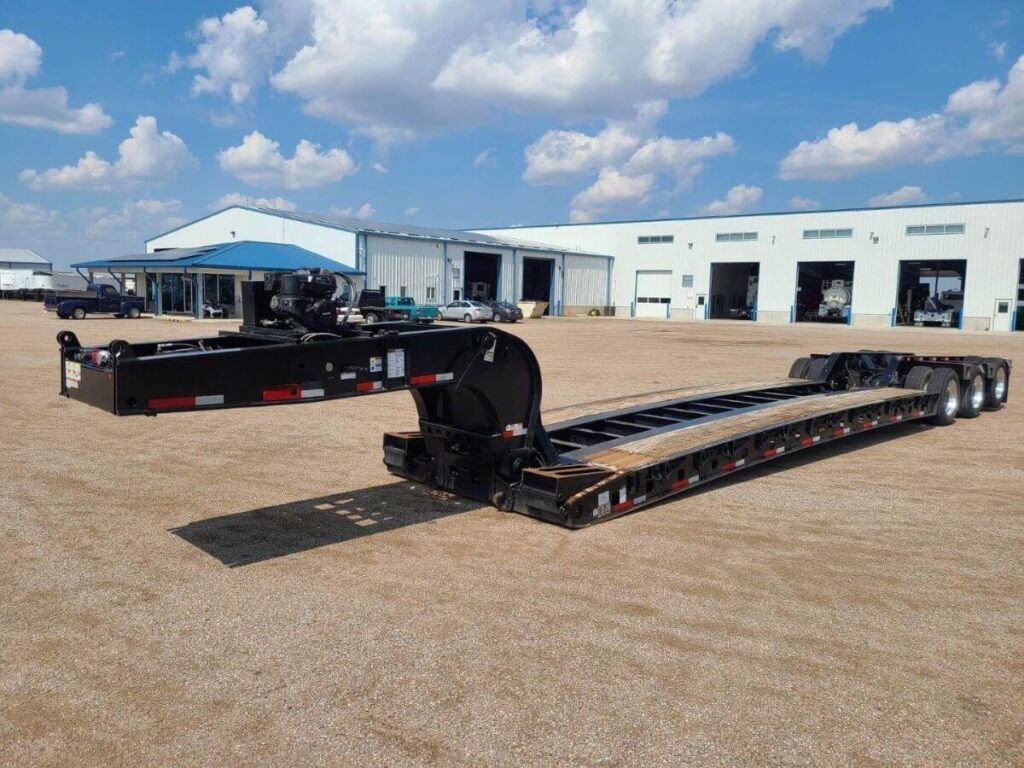
5. Industry-Specific Applications
Tri axle trucks aren’t limited to one type of job. I’ve seen them used in all kinds of industries—each one with its own hauling needs. The third axle gives more load support, which means more flexibility for you, whether you’re moving material, equipment, or livestock.
Construction
Construction sites move a lot of material, and time matters. Tri axle dump trucks are often used to haul sand, gravel, and asphalt to road or building sites. I’ve worked on jobs where the material needed to arrive fast, and a tandem just couldn’t carry enough. The tri axle setup helped us finish with fewer trips and less downtime.
Mining
Mining is tough on trucks. The loads are heavy and uneven, and the ground is rough. Tri axle trucks are often used to move ore, rock, debris, and other materials from site to site. The extra axle makes the truck more stable on dirt roads and helps spread the weight on uneven terrain.
Logistics and Transportation
If you’re moving goods locally or regionally, a tri axle flatbed or box trailer can be a strong option. These trucks handle bulk loads better than smaller setups and are easier to maneuver than larger rigs. I’ve seen them used for pallets, machinery, and packaged goods across short to mid-range routes.
Agriculture
Farms use tri axle trailers for hauling crops, grain, and sometimes even livestock. During harvest, you need to move a lot at once—and quickly. The tri axle trailer gives you more space and better balance, even on dirt roads or fields.
Oil, Gas, and Energy
In this sector, hauling is often about size and safety. Tri axle trucks move pipes, heavy equipment, and even fuel. Whether it’s delivering tanks to a well site or hauling machinery to a wind farm, the added support makes a big difference.
Retail and Individual Use
Not every tri axle truck is part of a big fleet. I’ve met owner-operators who use them for local delivery or general hauling jobs. From construction tools to furniture, the setup gives them more hauling power without jumping to a full commercial rig.
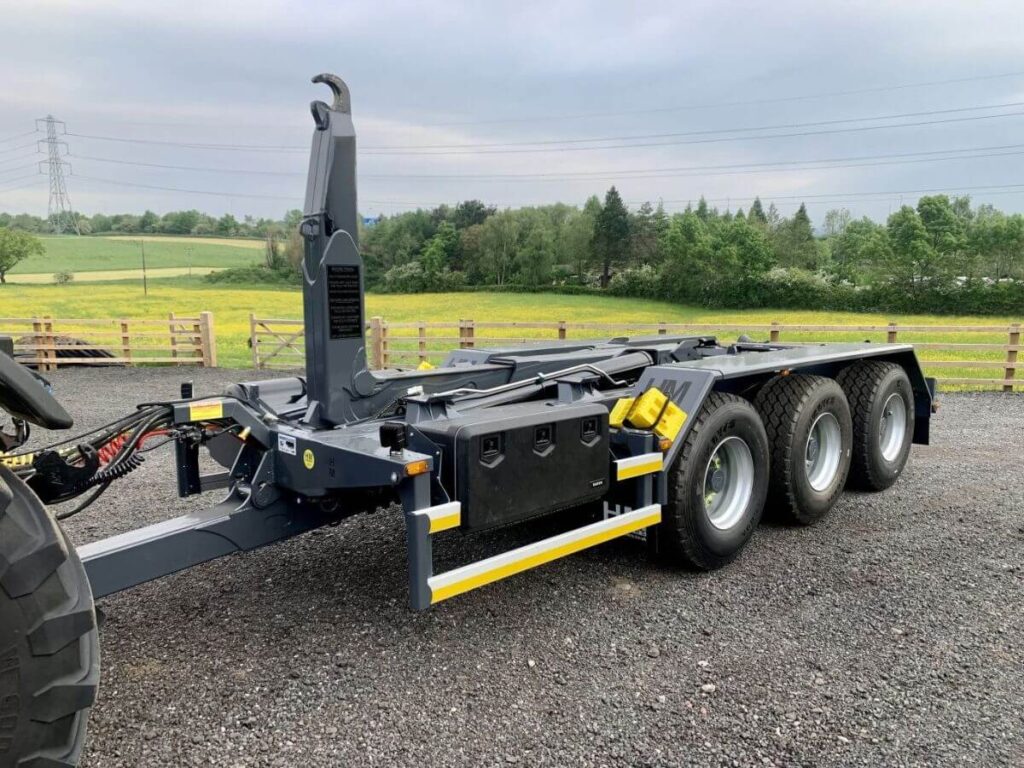
6. Tri Axle vs Tandem Axle vs Quad Axle: What’s the Difference?
When you’re choosing a truck setup, the number of axles changes how much you can haul, how far you can go, and how easy the drive feels. I’ve worked with all three setups—and I’ve learned that picking the right one can make or break your day on the road.
Here’s a detailed comparison to help you decide.
| Feature | Tandem Axle | Tri Axle | Quad Axle |
| Number of Axles | 2 axles (1 front, 1 rear or both rear) | 3 axles (usually 2 drive + 1 lift/tag axle) | 4 axles (3 rear axles + 1 front) |
| Weight Distribution | Load spread over fewer wheels—okay for lighter hauls | Better load spread—reduces stress on roads and tires | Best spread—handles extreme loads but increases road wear |
| Typical Legal Payload | Around 34,000–36,000 lbs (15,400–16,300 kg), depending on local laws | Around 42,000–48,000 lbs (19,000–21,800 kg) | 50,000+ lbs (22,700+ kg), often above legal limit without permits |
| Permit Requirements | Usually not required | Often avoids permits, depending on local axle laws | Often needs overweight permits for full loads |
| Turning Radius | Easiest to turn, best for city or tight spaces | Slightly wider turns but still easy to handle | Hardest to turn, needs more space on jobsites and roads |
| Ride Stability | Less stable with heavy or shifting loads | Smooth ride under heavy loads—more balanced | Very stable but stiffer ride, best on straight or open roads |
| Fuel Usage | Lowest fuel use | Moderate fuel use | Highest fuel use due to added weight and resistance |
| Maintenance Costs | Lower (fewer tires, brakes, and suspension parts) | Medium—more parts to service, but not overwhelming | Highest—more wheels, brakes, and suspension systems to maintain |
| Tire Setup | 4 to 8 tires total | Usually 10 to 12 tires | 12+ tires depending on configuration |
| Best For | Local deliveries, city work, lighter construction jobs | General construction, regional hauling, mixed cargo types | Heavy equipment, mining loads, long-haul transport, wind/energy infrastructure |
7. Tri Axle Maintenance & Safety Guide
Tri axle trucks give you more hauling power, but they also come with more parts to maintain. I’ve learned over time that keeping up with small checks can save you from big repairs down the road. Here’s a simple guide to help you stay safe and keep your truck in good shape.
Brake Inspections
- More axles mean more brake pads, lines, and drums to watch.
- Check for uneven wear, leaks, or loose fittings.
- Worn brakes on one axle can affect how the whole truck stops.
- Always test your brake system before hitting the road.
Tire Wear and Rotation
- Most tri axle trucks run 10 to 12 tires.
- Watch for uneven wear—especially on the rear and lift axles.
- Rotate tires regularly to get the most life out of them.
- Keep tires properly inflated to improve safety and fuel use.
Suspension Checks
- Check both spring and air suspension parts often.
- Look for cracked springs, worn bushings, or leaking air bags.
- Don’t forget the lift axle—it works hard when it’s down.
- Damaged suspension can lead to poor balance and rough rides.
Load Balance
- Always spread your load evenly across all axles.
- Avoid placing too much weight over a single axle.
- Use the lift axle when hauling heavier loads.
- Uneven loads can damage frames, brakes, and tires.
Pre-Trip Inspections
- Walk around the truck before every job.
- Check lights, brakes, tires, suspension, and fluid levels.
- Make sure the lift axle is working if needed.
- A few minutes now can help you avoid fines or breakdowns later.
Taking care of a tri axle truck doesn’t have to be complicated. With a solid routine and a few extra checks, you’ll keep it running longer and safer—job after job.
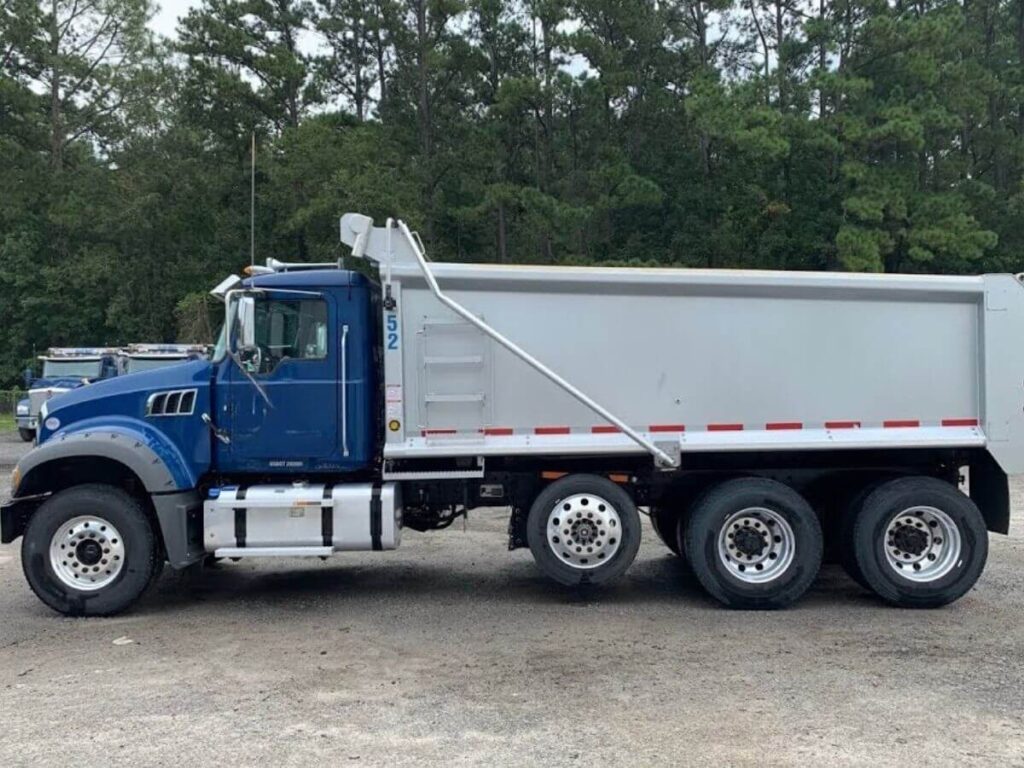
8. 5 Factors To Consider Before Buying a Tri Axle Truck
Buying a tri axle truck isn’t just about choosing the biggest setup you can find. It’s about matching the truck to your actual work. I’ve seen people spend too much—or buy the wrong type—because they didn’t take a few simple things into account. Here’s what I recommend you think about before making the decision.
#1 Type of Material You’ll Haul
The first thing to look at is what you’ll be hauling. If you’re moving gravel, you’ll need a strong frame and tough suspension. If you’re carrying liquids like fuel or chemicals, you’ll need better load control and stability. Heavy equipment calls for a lowboy setup with added strength. Every load has its own needs, and the right truck will handle it without wearing out too fast.
#2 Weight Limits in Your Area
Rules on axle weight can change depending on where you drive. Some regions allow higher legal payloads with tri axle trucks, while others still require permits for heavier loads. If you don’t check the local limits first, you could end up needing permits you weren’t planning for—and that adds cost and delays.
#3 Terrain: On-Road vs Off-Road
Where you plan to drive also matters. For mostly highway work, smooth suspension and good fuel efficiency are key. If you’re working off-road on farms, mines, or construction sites, you’ll need better traction and tougher suspension to handle rough ground and heavy loads without damage.
#4 Budget: New vs Used
Both new and used trucks have their pros and cons. A new truck comes with better fuel economy, fewer repairs, and a warranty—but at a higher cost. A used truck can save money upfront, but it’s important to check the frame, brakes, and tires. I’ve seen great used trucks last for years, and I’ve also seen deals that cost more in repairs than they were worth.
#5 Fuel and Tire Costs
With three axles, fuel use goes up. You’ve also got more tires to maintain and replace. Over time, these costs add up, especially if you’re driving long routes or working on uneven surfaces. Make sure your budget can handle these ongoing expenses.
Conclusion
Now you know what makes tri axle trucks different—and powerful. You know how to compare them, when to use them, and what to check before you buy.
So here’s your next step: start now.
Look at your loads. Think about your routes. Choose the truck that helps you move forward—not one that holds you back.
Contact us today—let’s build the setup that actually works for you.


